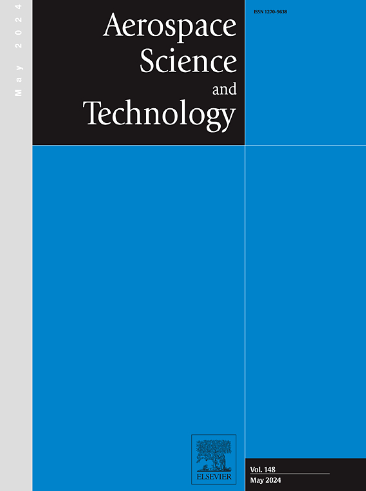Prediction of pressure distribution and aerodynamic coefficients for a variable-sweep wing
IF 5
1区 工程技术
Q1 ENGINEERING, AEROSPACE
引用次数: 0
Abstract
To satisfy the performance requirements across multiple speed ranges, a variable-sweep wing (sweep angle range from 25° to 40°) is derived from the BQM-34 “Firebee” drone model. However, predicting aerodynamic characteristics across various flight conditions and sweep angles is a challenging task. Traditional methods like CFD and wind tunnel testing are both time consuming and expensive. In order to efficiently predict the pressure distributions and aerodynamic coefficients, a novel network that combines a Radial Basis Function Network (RBFN) and a Convolutional Auto-Encoder (CAE) is proposed. Two distinct loss function methods, the standard Pressure-Targeted Method (PTM) and the newly developed Comprehensive Evaluation Method (CEM), are employed to optimize the network's predictive performance. These methods are evaluated on datasets with both trained and untrained sweep angles. The results show that while both PTM and CEM accurately predict pressure distributions, the enhanced CEM provides more uniform and reliable predictions. Moreover, the CEM method significantly outperforms PTM in predicting aerodynamic coefficients, reducing errors by over 50%. The proposed RBFN-CAE network with the CEM loss function offers an effective way to predict the aerodynamic characteristics of a variable-sweep wing, improving predictive models in aerodynamic applications.
预测变掠翼的压力分布和空气动力系数
为了满足多种速度范围内的性能要求,从 BQM-34 "火蜂 "无人机模型中衍生出一种可变后掠角机翼(后掠角范围从 25° 到 40°)。然而,预测各种飞行条件和扫掠角下的气动特性是一项具有挑战性的任务。CFD 和风洞试验等传统方法既耗时又昂贵。为了有效预测压力分布和空气动力系数,我们提出了一种结合径向基函数网络(RBFN)和卷积自动编码器(CAE)的新型网络。为了优化网络的预测性能,采用了两种不同的损失函数方法,即标准的压力目标法(PTM)和新开发的综合评估法(CEM)。这些方法在经过训练和未经训练的扫描角度数据集上进行了评估。结果表明,虽然 PTM 和 CEM 都能准确预测压力分布,但增强型 CEM 能提供更均匀、更可靠的预测。此外,CEM 方法在预测空气动力系数方面明显优于 PTM,误差减少了 50%以上。所提出的带有 CEM 损失函数的 RBFN-CAE 网络为预测变掠翼的气动特性提供了一种有效的方法,从而改进了气动应用中的预测模型。
本文章由计算机程序翻译,如有差异,请以英文原文为准。
求助全文
约1分钟内获得全文
求助全文
来源期刊

Aerospace Science and Technology
工程技术-工程:宇航
CiteScore
10.30
自引率
28.60%
发文量
654
审稿时长
54 days
期刊介绍:
Aerospace Science and Technology publishes articles of outstanding scientific quality. Each article is reviewed by two referees. The journal welcomes papers from a wide range of countries. This journal publishes original papers, review articles and short communications related to all fields of aerospace research, fundamental and applied, potential applications of which are clearly related to:
• The design and the manufacture of aircraft, helicopters, missiles, launchers and satellites
• The control of their environment
• The study of various systems they are involved in, as supports or as targets.
Authors are invited to submit papers on new advances in the following topics to aerospace applications:
• Fluid dynamics
• Energetics and propulsion
• Materials and structures
• Flight mechanics
• Navigation, guidance and control
• Acoustics
• Optics
• Electromagnetism and radar
• Signal and image processing
• Information processing
• Data fusion
• Decision aid
• Human behaviour
• Robotics and intelligent systems
• Complex system engineering.
Etc.
 求助内容:
求助内容: 应助结果提醒方式:
应助结果提醒方式:


